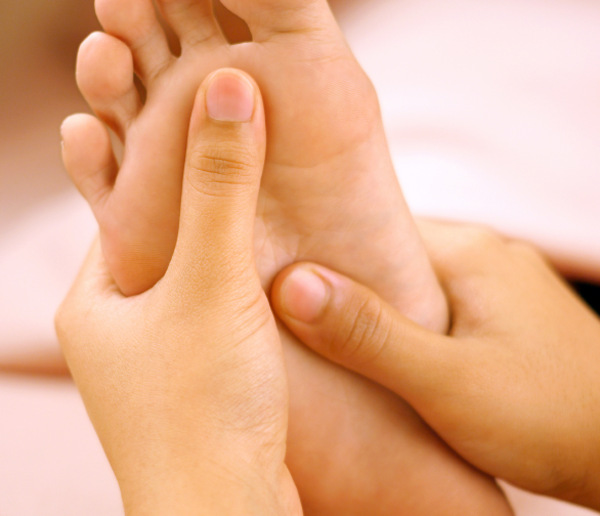
Soft tissue masses that are visible and protrude under the skin surface may not cause pain but can be unappealing to one’s eye. It’s best to reduce or remove them completely.
Lipomas or a benign fatty tumor is often found at the ankle level of women. Women are predisposed to having a higher proportion of fat in their legs and ankles that is highly resistant to diet and exercise. Ankle liposuction can change the way your legs look. Using a microcannula, a new technique that decreases scarring and negative effects of bleeding and nerve damage is widely accepted and is effective in reducing unwanted fatty deposits around the ankle and calf.
At foot, ankle, and leg vein center, we offer a range of skincare and soft tissue masses treatments including removal of skin tags, moles, warts, etc.
Moles, warts, or newly appearing lesions are first carefully examined by our specialist to evaluate your condition. A biopsy may be taken to evaluate and rule out any possible skin cancer. Once it is determined that there is no malignancy, removal of the lesions can be performed with plastic surgical skin techniques.

Xerosis or dry skin is a condition that can lead to scaling and itching. Keeping the skin moisturized with an emollient cream will provide adequate relief. Dermatology-approved skin moisturizers applied to the feet twice a day will be beneficial and these can be found at Dr. Schoenhaus’s office.
Excessive dryness can lead to deep grooves in the skin. It’s usually seen after wearing open-backed shoes for an extensive period of time, the skin of the heel becomes hard, dry, and cracked. This can be treated with a chemical peel and moisturizer. Consider it a facial for your feet.
Hyperhidrosis, or excess sweating, can occur not only in the underarm region but can involve the hands and feet. This can lead to staining of clothing as well as malodor. First-line treatments usually include deodorants and antiperspirants (with aluminum chloride hexahydrate), however, a more effective treatment for sweating in the feet includes Botox®. Botox® commonly used by dermatologists in the face can now be used in the feet to control excess sweating. The Botox® is administered in the office and the results are seen five days after treatment.
See Medicure Program
When a fungal infection involves the toenail, the nail becomes yellow, thickened, and brittle. Treatment of this condition is difficult as the fungus is highly resistant to most over-the-counter products and there is a high recurrence rate. Depending on the severity of the condition, there are various options to discuss with the physician including oral medication, topical prescription medication, or a specially compounded colored nail polish to conceal the fungal nails while it heals. Homeopathic treatments can also be recommended. At foot, ankle, and leg vein center, our newest Laser Nail Treatments can help heal the nail by killing the fungus.
Ingrown nails or a malformation of the nail can be painful when wearing closed-toed shoes by impinging the nail against the skin and shoe. The appearance of the nail may be curved on the sides with a rounded appearance. For an infected ingrown nail, temporary relief is obtained by a minor office procedure.
Permanent cosmetic correction of the nail is an option for recurrent problems. A simple procedure can be performed in the doctor’s office and you can immediately return to your normal activities.
Our award-winning podiatrists at Foot, Ankle & Leg Vein Center strive to recognize your needs and desired outcomes while crafting a tailored and efficient soft tissue tumor treatment with the utmost standard of care possible. We are conveniently located in Boca Raton, FL, and Boynton Beach, FL. Call us at (561)-750-3033.
Your questions answered
There are many types of skin conditions and disorders including xerosis, fissures and cracked heels, hyperhidrosis, etc.
Xerosis or dry skin is a condition that can lead to scaling and itching. Keeping the skin moisturized with an emollient cream will provide adequate relief. Dermatology-approved skin moisturizers applied to the feet twice a day will be beneficial.
Excessive dryness can lead to deep grooves in the skin. It’s usually seen after wearing open-backed shoes for an extensive period of time, the skin of the heel becomes hard, dry, and cracked. This can be treated with a chemical peel and moisturizer. Consider it a facial for your feet.
Hyperhidrosis, or excess sweating, can occur not only in the underarm region but can involve the hands and feet. This can lead to staining of clothing as well as malodor. First-line treatments usually include deodorants and antiperspirants (with aluminum chloride hexahydrate), however, a more effective treatment for sweating in the feet includes Botox®. Botox® commonly used by dermatologists in the face can now be used in the feet to control excess sweating. The Botox® is administered in the office and the results are seen five days after treatment.